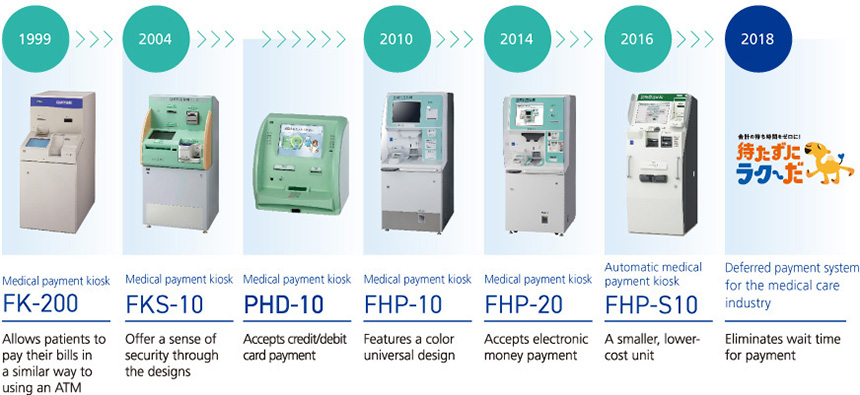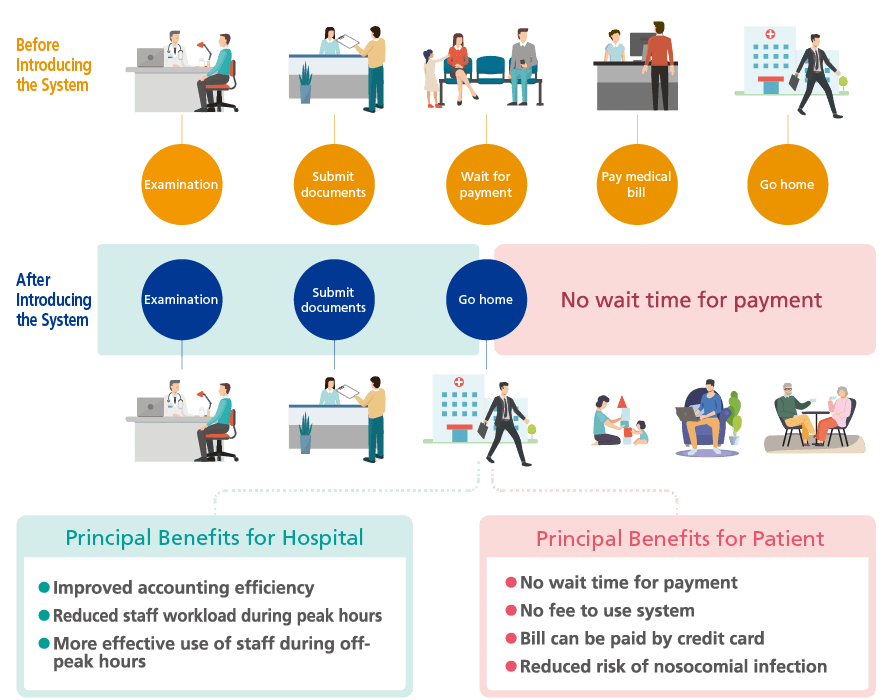Activity Highlights

Our Track Record in this Field 
We initiated this business in 1999 by developing the FK-200 medical payment kiosk, which can be used similar to a bank ATM. In 2004, we developed the PHD-10 credit card-compliant medical payment kiosk, followed by the FHP-10 medical payment kiosk featuring dramatically improved operability and visibility in 2010, and thus solidified our commitment to the continual upgrading of our product line. In 2018, we developed for the medical care industry a deferred payment system that eliminates the wait time required for patients to make payments.

Developing a Medical Deferred Payment System for the Medical Care Industry
We developed a medical deferred payment system for the medical care industry in July 2018. The system is intended to reduce the wait time for payment by patients and increase the convenience of paying hospital medical bills. It also allows patients who want to pay later to make deferred payments on their bills by registering their hospital ID card number, credit card information and mail address via a computer or smartphone. After a doctor’s examination, patients can go home without having to immediately pay their medical bill.
Using an interface between the medical payment kiosk and medical accounting system, hospital staff can automate administrative tasks such as verifying and reconciling cash receipts that had previously been processed manually, thereby significantly improving the efficiency of accounting operations. The system contributes to reducing staff workload at peak hours by performing accounting operations outside those hours, and ultimately boosts the productivity of hospital administrative staff and addressing the labor shortage.
The Flow of Patients Before and After Introducing the System


We are striving to create a comfortable environment in the hospital.
Our hospital handles around 5,000 outpatients every day, so the wait times for payment are long. We needed to address the challenges of mitigating long queues at the accounting desks and reduce wait time. We introduced Glory’s medical payment kiosks as a way to alleviate the crowded conditions. Recently, we realized the situation could be further improved when Glory recommended its deferred payment system, which greatly benefits outpatients by enabling them to return home right after their appointment, and so we introduced the system.
As more people use the system, there will be fewer crowds in the hospital, and outpatients who pay their bills in cash will be able to return home sooner as well.





